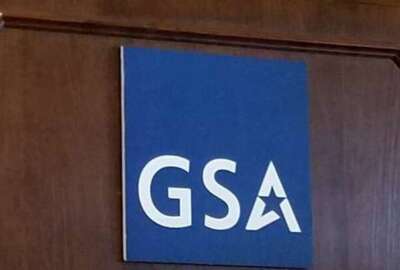
An update on GSA’s schedule consolidation
The General Services Administration's Multiple Awards Schedules program is one of the government's premier programs for buying common goods and services. Now GSA is...
Best listening experience is on Chrome, Firefox or Safari. Subscribe to Federal Drive’s daily audio interviews on Apple Podcasts or PodcastOne.
Like a DC-3, the General Services Administration’s Multiple Awards Schedules program has churned along decade after decade. It’s one of the government’s premier programs for buying common goods and services, and it generates billions of dollars in sales. Now GSA is in the midst of consolidating 24 schedules into one sort of master schedule. For a progress report, the Federal Drive with Tom Temin turned to the director of the MAS management office, Stephanie Shutt.
Interview transcript:
Tom Temin: What is the overarching goal here in consolidating all of these schedules? That seems like almost like you’re changing the color of the sky.
Stephanie Shutt: Yes. So the main goal of this entire project is to help our entire program become more consistent. We’ve got a lot of feedback from industry, from our customer agencies, and from our own workforce related to the consistency in different groups that ended up being siloed due to the amount of schedules that we had. The other thing we found when we were talking to everyone was that not only was there a consistency issue, but they became a duplication issue because everyone was building on their own, not as an enterprise. So in the end it created this weird guessing game where customers came in and you to guess which one you want to do. Industry came in, they had guess which one they needed to get. So we tried to figure out the best way to get us to an easy path where you didn’t have to read pages of instructions to figure out what you wanted. And then we realized the only way we’re gonna be able to do that is to go one to so that that guessing game was just eliminated. We can get some consistency in terms and conditions. We could remove all the duplication across the program.
Tom Temin: It sounds almost a if you could buy a given commodity on more than one schedule, but you might have different terms and conditions depending on which one you bought it from.
Stephanie Shutt: So you could have different terms and conditions based on how that commodity was put on contract. If you bought off a services contract that happened to have a few commodities, it would be a different way than if you were buying commodities off a contract that was just for commodities and no services. And so it was just how you came to market was just slightly differently. But in the world today, people don’t usually buy just commodities or just services, everyone’s buying solutions. So the fact that you have to go to multiple areas to get a solution just made no sense anymore.
Tom Temin: In many ways, that’s a very old problem. In the early PC days you would hear stories of, well, I can buy the monitor and the CPU here, but the keyboard and the cables I have to buy somewhere else. Otherwise it was bundling and so on and so forth. And when you mention the inconsistencies is that in the terms and conditions, mainly that people were encountering?
Stephanie Shutt: The terms and conditions are pretty much the same for about 80%. It changes on the 20% for each of the schedules, and that’s for the specific stuff. The consistency comes with if you ask a question. You’re an agency, you ask GSA a question, depending on who you, get and depending on their view and how they’re siloed, that answer could be different. That was something that everyone got really tired of and very frustrated with, which I can understand. It’d be like calling any company and you ask one person, they give you an answer. You call three days later, you ask another person and they give you a completely different answer. Now you’re just sitting there going, okay, well, it’s one of two, I hope, but you’re not really sure which one it would be.
Tom Temin: Could people get more than one correct answer? Or was one wrong?
Stephanie Shutt: No. In reality, both would be right. But it was from a completely different viewpoint. And so it feels like they’re completely different, even though they’re both the correct answer.
Tom Temin: So this consolidation then, let’s begin with what it requires on the part of the agency to get this done, as you said there’s millions of combinations of questions and answers.
Stephanie Shutt: For agencies, one of the things we really wanted to do is make it so that they didn’t have a whole lot of change. We have a lot of orders in place. We have a lot of orders that are coming up. We cannot shutdown buying things because we’re doing a project, that’s not a reality of life. So we needed to create something that would not disrupt any of that situation. When we talked with agencies, we wanted to make sure everything we did did not disrupt anything that they were doing. So every order that will be in place before a contractor joins this schedule, it’s going to be valid and good to go because none of the contract members will change. And any orders that are coming up, we’ve done some system fixes in there. So both sides, the legacy and the new, will be selected so that no one loses out on competitions either. So agencies don’t have to learn everything during this time. We’re kind of gonna guide them through that path with little to no resistance on their side.
Tom Temin: What do vendors have to do
Stephanie Shutt: Vendors is a little bit more work. It’s always been work for them, and it’s gonna be a little bit more for our workforce as well. Basically, last September, October, we shut down the legacy schedules. We’re still working through getting the people who started the process before that time awarded on contract. Anyone who came in after October 1st came in under the new schedule. So they’re good to go, and we’re actively awarding those contracts today. For anyone who was on the legacy schedules, right now, they have received a mass modification. Basically, that’s just a modification that went out to the masses. So they’ve received this modification. We sent it out by email to everyone, and all it does is it aligns the terms and conditions to this consistent way. It doesn’t change anything. We didn’t add anything. We just deleted stuff we didn’t need any more. The American Recovery Act, we have no money, nor has there been money in that for years. We don’t need that term and condition anymore. Things like that are things that we stripped out of this contract, so it wasn’t so burdened full of terms of conditions that you had to read for no purpose.
Tom Temin: So this was a chance to clear the attic.
Stephanie Shutt: Yeah, we definitely took the time to delete everything. But we did make a rule. nothing new. Because that way we could ensure we had a point that we could finish. When you start saying let’s do something new or fix something, there’s another thing in the bucket, then there’s another thing. So we decided nothing new. But if there was something older, obsolete, let’s get rid of it and be done with that.
Tom Temin: Will you be able to test whether employees now give consistent answers? I mean, you could call five different people yourself and see if you get the same answer.
Stephanie Shutt: We’ve started to notice that we are getting more consistency on the answers. One of the things that will bring a lot more consistency, especially for industry partners, is as we start working with them to get them down to one contract, there are only gonna have one contracting officer,. Which means they’re only talking to one person, which means the possibility of getting multiple answers is going to basically go away on its own.
Tom Temin: Getting to the terms and conditions. Is there going to be a standard library from which people contracting officer and vendor can agree that these will be in there, or will everyone have the same terms and conditions?
Stephanie Shutt: We broke up the schedule by category. You have the main solicitation that lists the main terms and conditions for the contract, and that’s that 80% that everyone gets. And then we did the specific terms and conditions by category, because if you are an IT company, you’d probably don’t want to look at office supplies. You probably just want to look at IT. So we have an information technology category. You would download that attachment for the large category terms of conditions, subcategory terms and conditions or special item number terms and conditions if they exist. But that way it kind of brought it down a bit, and we could group things together more easily, so the industry knew exactly what was expected of them, but also agencies could search our solicitation, more actively and find things more quickly.
Tom Temin: So you’ve consolidated, but it’s not exactly one size fits all either.
Stephanie Shutt: The world will never be one size fits all. That’s just a fact of life. So we’ve created this vehicle to be something that will fit multiple combinations of what you’re coming to market and how you’re coming to market, and be a little bit more flexible for both our industry and our customer agencies.
Tom Temin: This will all be in final form when?
Stephanie Shutt: It’s final now. The solicitations final now, and contractors are moving over. We’re right around 50% of our contractors have moved the new solicitation. Our next step will be in July. We’ll start phase three, and this is going to be working with industry to get everyone down to one contract and based on what types of orders and blanket purchase agreements, that probably could take anywhere from a couple of years to five years. But once that’s done, our main goal is just get everyone to one contract per contractor. That’s the main goal of the project.
Tom Temin: What’s the current rate of sales going through the MAS?
Stephanie Shutt: It’s around. $32 billion of business volume goes through that contract vehicle every single year
Tom Temin: That’s nothing to sneeze at. Final question. What’s the status of the price reduction clause?
Stephanie Shutt: Oh, the price reductions clause. That clause is still in there. We do have the transactional data reporting as well. So we have two options for people to pick from. You could do the commercial sales practice with that price reductions clause. Or you could do the transactional data reporting. However, in the pilot, you have to have a pilot special item number to opt into that for your contract. But there are those two options. This will also allow us to review how that the price reduction clause actually helps government or helps industry or hinders industry or any of those things because we’ll have two different things that we can measure.
Tom Temin: At some point, the multiple awards schedule will have to coexist with the electronic marketplace if that project ever gets done. Are you thinking about how those will be different if they have to be, or maybe redundant?
Stephanie Shutt: So we’re gonna have to definitely look at that. I don’t think anyone’s gonna know until the ecommerce platform is really up and going. Once that’s up and going, we can actually look at both programs and see what’s good for industry? What’s good for government? What works for everyone? What makes it easy for everyone? And that’s really the goal of all of these projects.
Tom Temin: Thanks so much for joining me.
Stephanie Shutt: Thank you so much.
Copyright © 2025 Federal News Network. All rights reserved. This website is not intended for users located within the European Economic Area.




